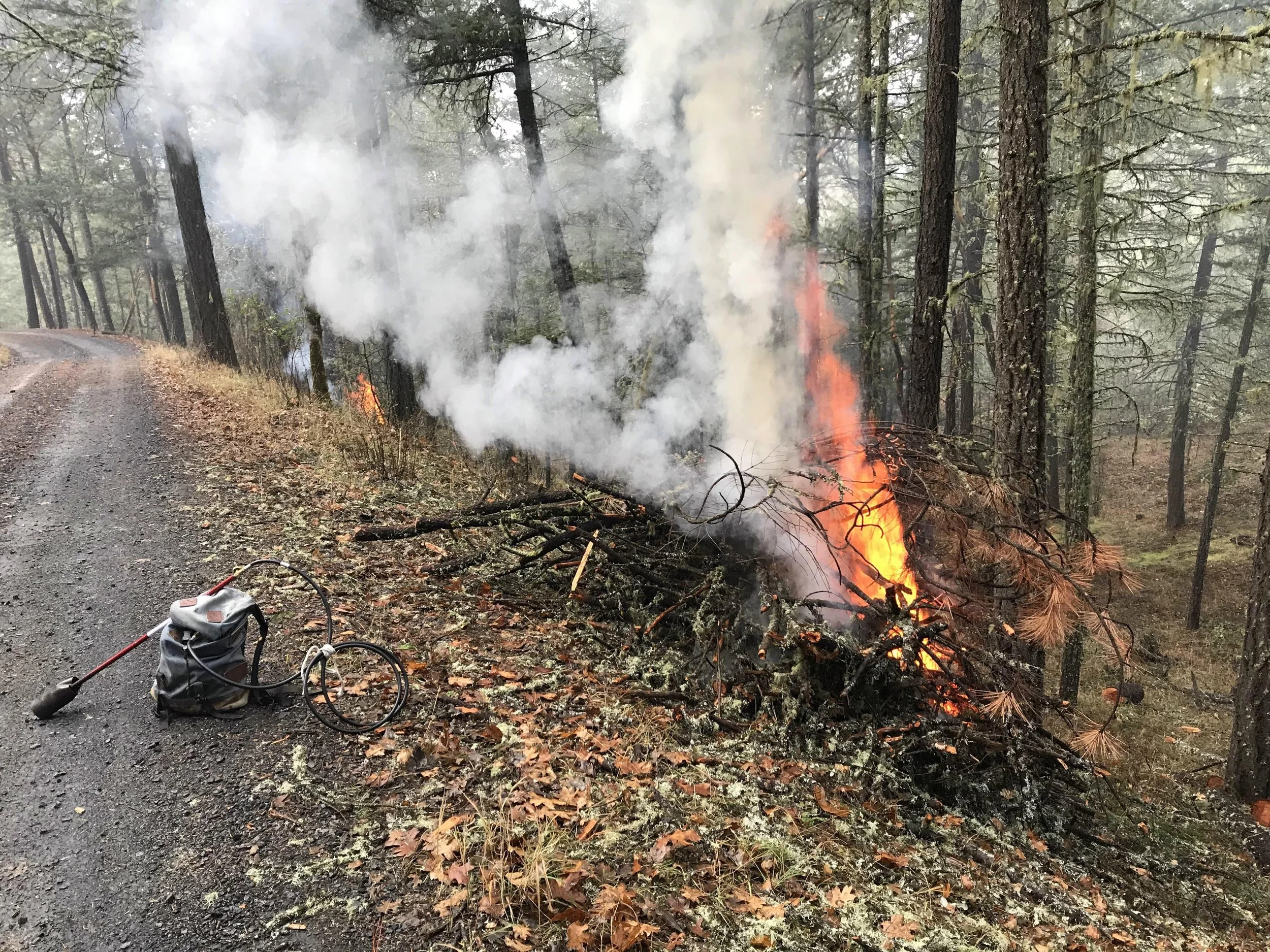Get Prepared NOW. The National Fire Protection Association declared May 7th as Wildfire Community Preparedness Day. Even small actions can have a big impact on fire outcomes for your home, your family, and your community. Participate today by clearing your roof and gutters of dead leaves and moving flammable material away from your house. The actions you take now will help reduce the chance of damage in the event that a wildfire threatens your home. For more ideas on where to start, check out KS Wild’s Forest & Fire Toolkit.
Industrial Forestry Makes Fires More Severe. There are many variables that contribute to the increase in the occurrence of high severity fire. Climate change, fire suppression, the exclusion of cultural burning, and development into fire prone landscapes all lead to increased fire impacts on forests and communities. All true, but there is not as much appreciation of the role of past and ongoing industrial forestry. Often we just hear that more management is better, but we don’t hear what kind of management is best. We have known for many years that industrial logging increases high-severity fire effects, but there are two new research results that reinforce these findings.
The Labor Day 2020 Fires was an extreme event that devastated many communities throughout Oregon and northern California. The fires were often indiscriminate, but was there any role that forest management played? Researchers looked at the 2020 Oregon Labor Day fires and found that while wind, terrain, and humidity played a huge role in fire effects, fuels were also important. Industrial forests that were clearcut and replanted – primarily for timber production – burned more severely than their older and taller counterparts, over the entire fire area. Read more here. Another research project that looked at over 150 fires across several million acres in California found greater high-severity fire in industrial forests. They found that the odds of high-severity fire on “private industrial” lands were 1.8 times greater than on “public” lands.” Read more here.
10-Year Strategy Updated. On the heels of Congressional approval of nearly $4 billion in infrastructure funding for wildfire mitigation, the U.S. Forest Service released a plan that calls for even more money, seeking $50 billion for 10 years to address the wildfire crises. You can read more about this national plan here. While the agency rolls out its national wildfire plans, Southwest Oregon’s Rogue River-Siskiyou National Forest was selected to receive $3 million annually to reduce fuels and will begin applying that money to the ground soon. This funding is provided through the Collaborative Forest Landscape Restoration Program, which requires a transparent, inclusive collaborative process for projects. KS Wild will remain engaged in projects to help ensure the work is done where it does the most good and that it is not used to log old forests and trees.
As Wildfire Season approaches, KS Wild will be updating our Fire Dashboard which is a clearinghouse of wildfire information and can be helpful to keep up-to-date on active wildfires and smoke resources in our region. Stay safe, stay engaged, and stay in touch!

